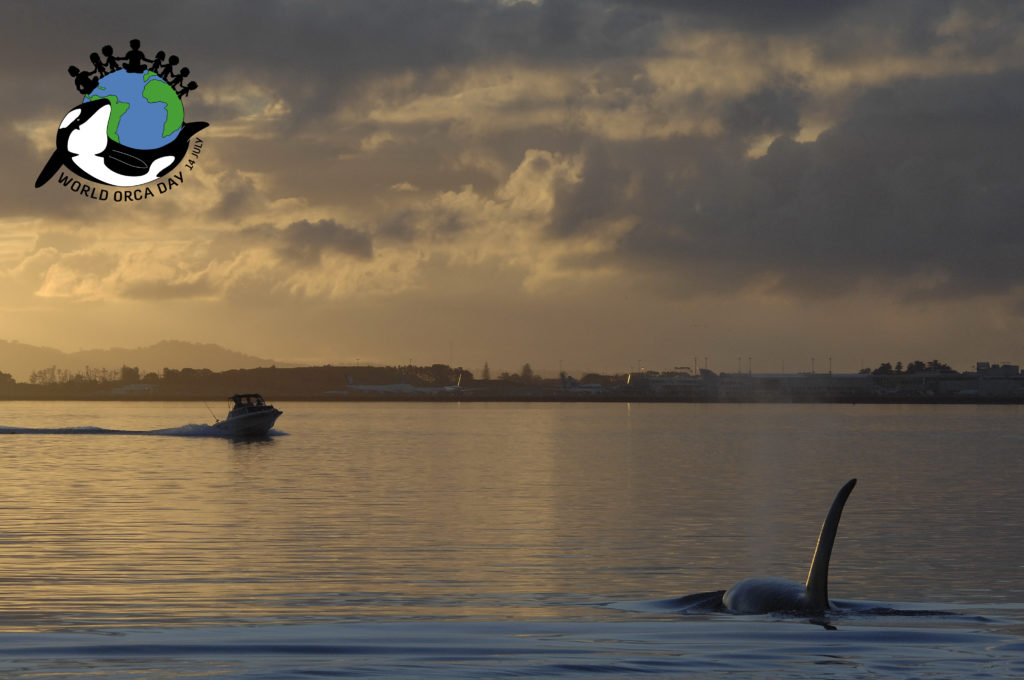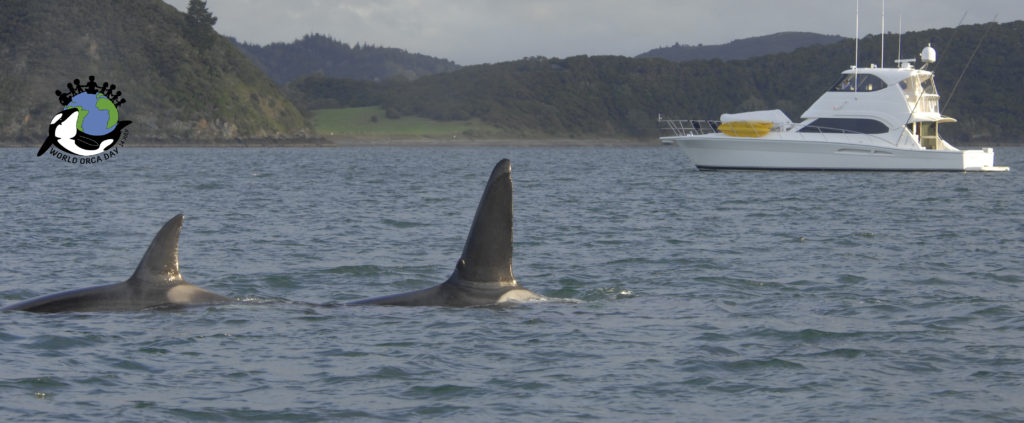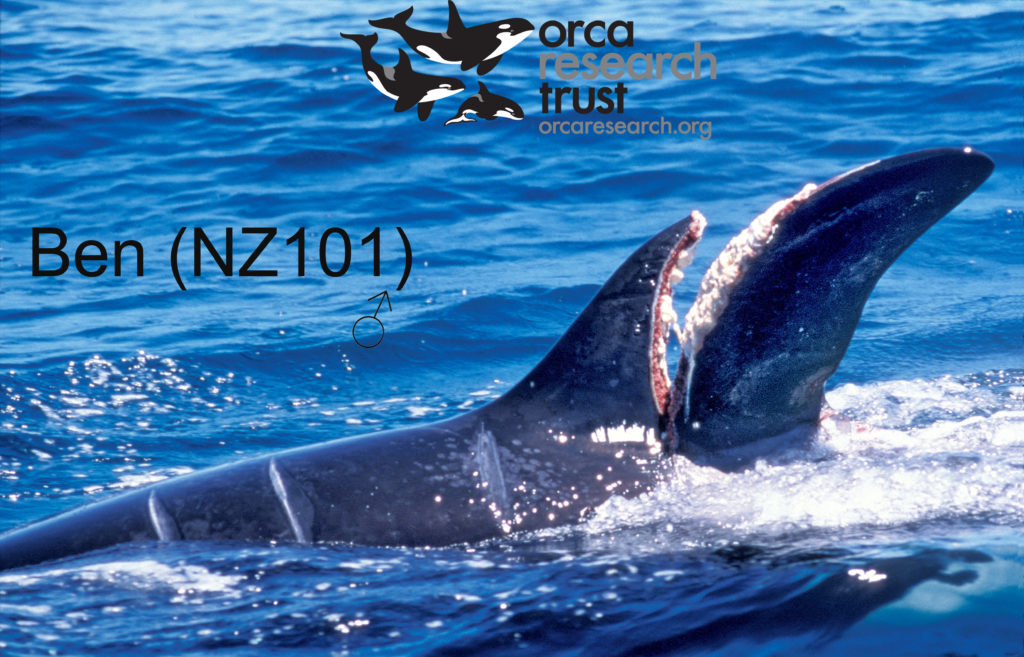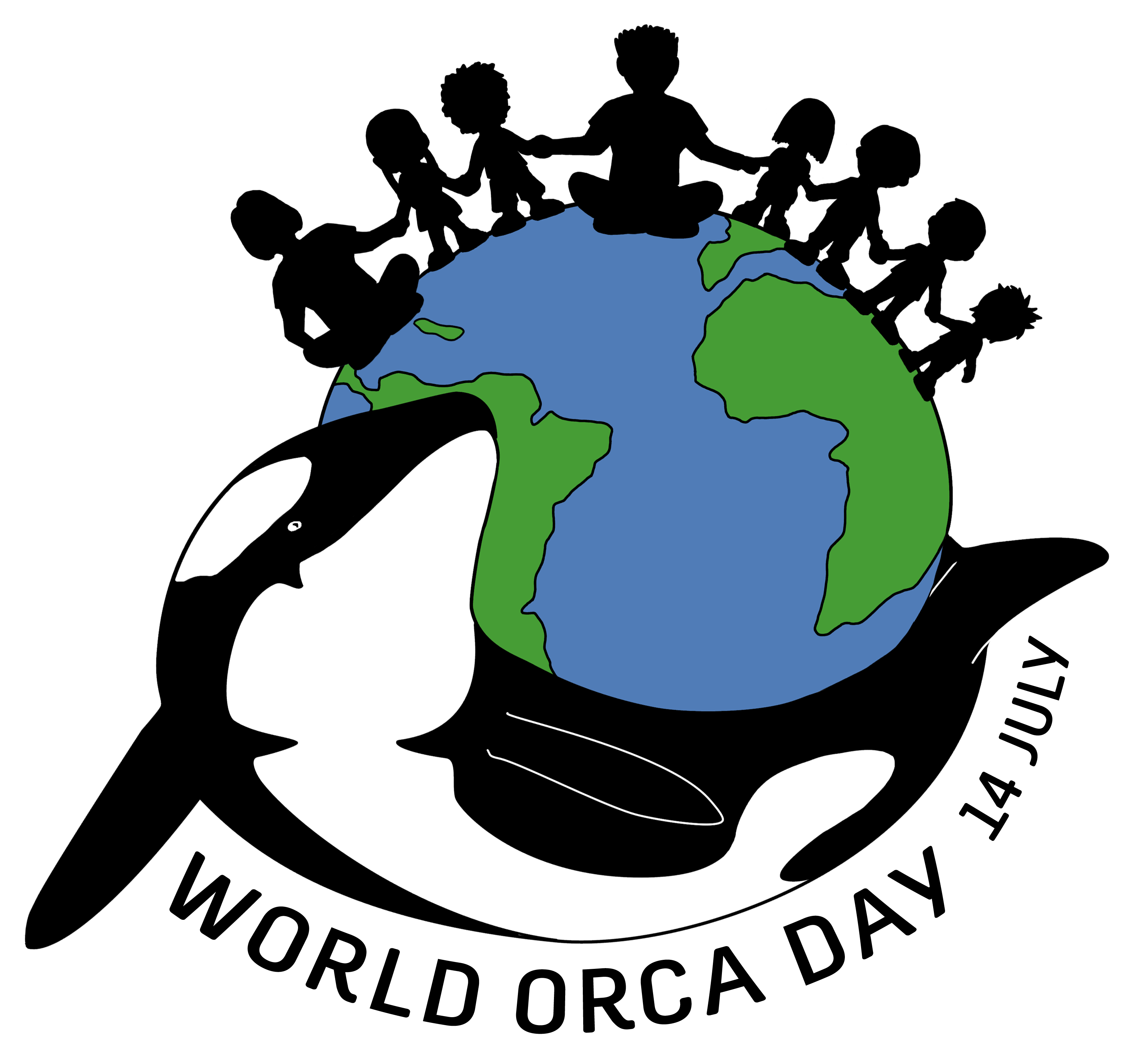Orca are exposed to several conservation and welfare threats, most of which result from human activity (termed anthropogenic). We give an outline below of some of these threats.

Pollution
There are several chronic pollutants that have harmed marine life for decades, including chemical pollutants and plastics.
Chemical pollutants include a wide array of toxins, such as pesticides, herbicides, industrial chemicals, oil and sewage. Some of these persist in the environment for a very long time. These toxins work their way up the food chain by processes called bioaccumulation and biomagnification. Since orca are apex predators, they accumulate concentrations of contaminants when eating prey that have also ingested and accumulated chemicals. Over time, this burden of toxins increases and detrimentally affects the health of orca (for example, impairing their immune and reproductive systems). Their toxicity levels also indicate how polluted their habitat is, which is one of the reasons orca are termed an ‘indicator’ species.
Orca Aware has provided an overview with links that explains the latest how chemicals are harming orca and what can be done to help.
Some orca populations have also been impacted by acute incidents, such as the devastation caused by the Exxon Valdez oil spill to pods in Alaska and the Aleutian Islands. These events have long-term consequences for orca health and survival.

Noise Pollution
Unlike humans, whose primary sense is vision, orca rely on their echolocation and hearing to navigate the ocean, communicate with each other and hunt prey. In areas where there is a lot of boat traffic or military activity, particularly using sonar, their behaviour and ability to carry out normal activities is affected. In some cases, noise pollution can lead to physical injury, stranding and death.
The Southern Resident orca population in the Pacific Northwest has been particularly exposed to this threat, with heavy vessel traffic from both commercial and tourist activity on their habitat’s waterways.
There has been a noticeable increase in the presence of these orca around the coastline during the COVID-19 lockdown, which may be linked with a quieter environment from reduced boat and ship activity.

Other habitat disturbance
Additional human activities, such as pile driving and bottom-trawling, also affect orca habitats around the world, posing a threat to their ability to function and find prey. Habitat disturbance affects all sea creatures, which risks disrupting the natural ecosystem.
This is why orca experts, advocates and the public are so concerned about the Trans Mountain (oil) pipeline expansion through Pacific Northwest orca territory, with the Assembly of First Nations having launched a lawsuit against the Canadian government to stop it. Not only will it increase disturbance of orca and other marine life from construction work and increased ship traffic, it also elevates the risk of oil spills and other chemical pollution leaking into the environment.
Entanglement
As well as ghost fishing gear, fixed fishing lines (including from cray pots) and anchoring lines from aquaculture can pose an entanglement risk to orca (and other marine life).
This case study from the United Kingdom’s West Coast Community orca population, which is now on the path to extinction because of pollution, documents the death of orca “Lulu” who stranded and died in Scotland. She was found entangled and with lethal levels of chemical contaminants in her body.
Another example occurred recently in New Zealand, where an orca was found entangled in cray pot fishing lines. Fortunately, experts from the Orca Research Trust were able to intervene and there was a positive outcome. The orca, known as Dian has been resighted with her family many times since this event.
Harassment
In many countries, it is illegal to “harass” orca (and other marine mammals). However, this doesn’t stop irresponsible behaviour around the animals, with some people unsafely manoeuvring boats, other watercraft or swimming too close. This disrupts orca from carrying out their normal behaviour, including feeding. It increases an orca’s risk of physical injury from boat propellers and other human contact.

Boat Strike
Orca are at risk of ship or boat strike from people who are unobservant or improperly trained on the water, not just those who are behaving irresponsibly. Keep in mind that many orca are already compromised as a result of chemical and other pollutants taxing their bodies, so they may be slow to react, or slow to heal, both of which increase their risk.

Boat strike was likely the cause of death for an orca found dead with blunt force trauma in Canada in 2016. The male was from the Southern resident population, who are also known to be suffering from reduced prey availability and high chemical burdens.
Whaling
While compared to some whale and dolphin species, the present day risk of whaling is relatively low for orca, they are targeted in some countries. For example, recently orca have been hunted in Indonesia, where a family of three orca where killed and another two orca in the Caribbean.
Historically, orca were incorrectly viewed as dangerous animals and pests. Many considered them as competitors to fish stocks and therefore pests. This often resulted in fisherman in some parts of the world shooting at and injuring individuals.

Wild Captures and Captivity
Wild orca captures for public display and entertainment decimated several of the world’s orca populations, including the Southern resident, Icelandic and most recently Russian orca. Some of these populations are still experiencing the harmful effects of captures that happened decades ago. For example, the Southern resident population size was severely reduced from captures during the 1960s and ’70s. As a result of other conservation threats that have since added pressure, particularly chemical pollutants and reduced prey availability, the population is still struggling.
During captures, orca who are not kept alive for the captive display and entertainment industry, or who do not escape, are often killed. This is either intentional to sell their bodies to the meat trade, or unintentionally as a result of the violent nature of capture events.
Orca who are taken into captivity suffer enduring poor welfare as a result of the inability to meet an orca’s biological needs (that have evolved over 50 million years) in an artificial environment. More information about the harmful affects of captivity can be found in this article about captive orca welfare and assessment.
Empathy towards the plight of captive orca has increased over recent years, especially since the release of the documentary ‘Blackfish’. As a result, several parks, including SeaWorld (the industry’s largest), has pledged to phase out orca captivity. However, China are increasing their display of captive orca, which has been driving captures in Russia. This has garnered worldwide media attention, particularly surrounding the “whale jail”, which up until 2019 held then-newly captured orca and beluga whales in icy conditions to eventually be transferred for captive display. The Russian government responded to calls from expert scientists and the public, and working with experts, released the animals back into their natural habitat.
Not only does wild capture harm the welfare of individuals, but it is destructive to the entire population, with grave conservation implications. Young animals, often female, are typically taken from the population, inhibiting the population’s ability to reproduce and causing subsequent decline.
Lack of resources
Some populations, such as the Southern resident orca, are suffering from reduced prey availability; in their case, they feed on Chinook salmon. This is a result of pollution and habitat disturbance, particularly in the form of man-made dams that block the salmons’ path to and from breeding grounds.
This exacerbates the effects of chemical pollutants in their body as it results in compensatory breakdown of their fat stores, releasing the toxins around their bodies. Female orca are able to offload some of these chemicals when nursing young, resulting in increased calf mortality. In males, who are unable to dump these toxins anywhere, it has a greater negative impact on their organs, including reproductive, reducing their ability to produce offspring.
Climate change
As climate change is impacting whole ecosystems, a recent study has also found that the effects of climate change extend to orca. With new habitats opening up, for example where polar ice caps are melting, and prey species changing locations as a result of temperature and other pressures, orca are also changing and extending their ranges. This alters and increases burdens on predated species, which risks harming the ecosystem, including prey availability, and therefore orca. More research into the impact on orca, other animals and worldwide habitats is needed in this area.

Stranding
All of the above threats increase the risk of orca stranding due to impairment from illness and injury. However, orca are also known to strand for other reasons. For example, New Zealand orca hunt rays in shallow waters, which can result in accidental stranding, especially when the animal is young and inexperienced. This is similar for orca off the coast of Argentina, where they intentionally beach themselves to hunt sea lions. In other countries, however, such as the United Kingdom, stranding events typically only occur when orca are old or fatally compromised.
